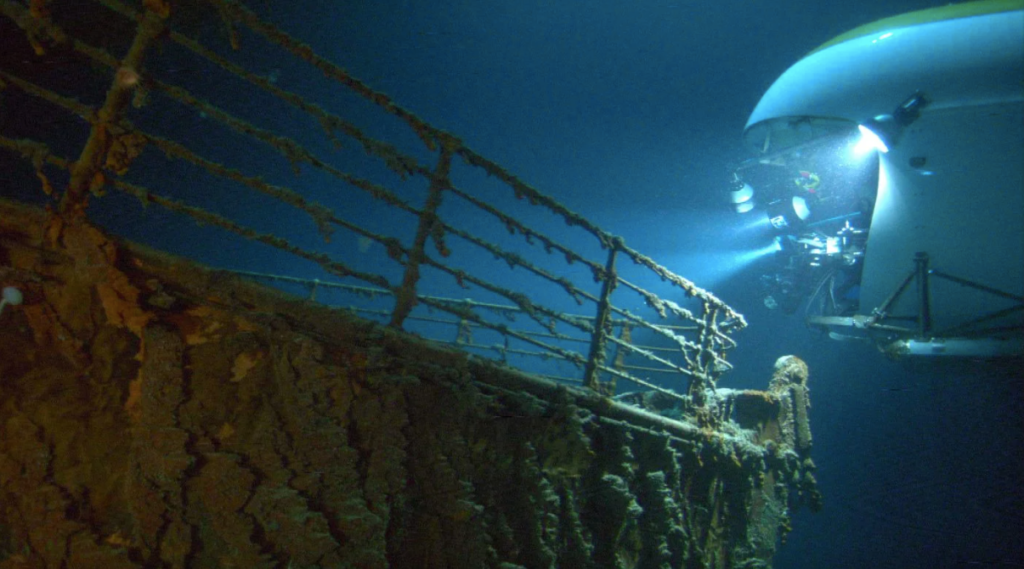|
Getting your Trinity Audio player ready...
|
In a concerning turn of events, a submersible craft used for Titanic exploration has gone missing in the Atlantic Ocean with its crew on board. The incident has triggered a large-scale search and rescue operation, involving assistance from government agencies and deep-sea firms.
The missing craft is believed to be OceanGate’s Titan submersible, a substantial truck-sized vehicle designed to carry five people and equipped with a four-day oxygen supply. Contact with the craft was lost, and the priority now lies in ensuring the safety and well-being of the crewmembers.
OceanGate, the tour firm responsible for organizing expeditions to the iconic Titanic wreck, expressed their dedication to finding a resolution and bringing the crew back safely. The company expressed gratitude for the extensive support received from government agencies and deep-sea companies in their collaborative efforts to re-establish contact with the submersible.
OceanGate’s expeditions offer a unique opportunity for individuals to explore the depths of the ocean and witness something truly extraordinary. With ongoing and planned expeditions scheduled for June 2024, the submersible plays a crucial role in facilitating these awe-inspiring journeys.
Typically, the Titan submersible carries a pilot, three paying guests, and a content expert. Each eight-day trip departs from St John’s in Newfoundland and involves approximately eight hours for a full dive to the Titanic wreckage, including the descent and ascent.
Of the three submersibles owned by OceanGate, only the Titan has the capability to reach the depths required to access the Titanic wreck, which rests approximately 3,800 meters (12,500 feet) beneath the ocean’s surface. Weighing over 10,432 kg (23,000 lbs), the Titan is equipped with 96 hours of life support for its crew of five and can reach depths of up to 4,000 meters.
The Polar Prince, a vessel responsible for transporting submersibles to the wreckage site, was involved in the expedition, according to its owner. The Titanic, a tragic reminder of maritime history, sank in 1912 after colliding with an iceberg during its maiden voyage, resulting in the loss of more than 1,500 lives among the 2,200 passengers and crew members.
Since its discovery in 1985, the Titanic wreck has been extensively studied and explored. The wreckage is divided into two parts, with the bow and stern separated by approximately 800 meters (2,600 feet), surrounded by a substantial debris field.
Recently, a significant milestone was achieved when a full-sized digital scan of the wreck was created using deep-sea mapping technology. The scan provides a comprehensive view of the ship’s scale, while also capturing minute details such as the serial number on one of the propellers.
As the search and rescue operation unfolds, hopes remain high for the safe recovery of the crew and the resolution of this unsettling incident that has unfolded during an expedition to one of the world’s most famous maritime tragedies.
The disappearance of the submersible and its crew during the Titanic wreck expedition serves as a stark reminder of the risks involved in exploring the depths of the ocean. Despite the advancements in technology and our understanding of the underwater world, the vastness and unpredictability of the sea continue to pose challenges.
OceanGate’s commitment to safety and its cooperation with government agencies and deep-sea firms demonstrate the gravity of the situation and the collective effort to locate and rescue the crew. As the search operation intensifies, hopes are intertwined with prayers for a successful outcome.
The Titanic holds a unique place in history, captivating the imagination of people worldwide. Since its tragic sinking over a century ago, it has become an enduring symbol of human vulnerability in the face of nature’s might. The exploration of the wreck has provided valuable insights into the events of that fateful night and a deeper understanding of the ship’s design and structure.
Last month’s achievement of creating a full-sized digital scan of the wreck marked a significant milestone in our quest to document and preserve the Titanic’s legacy. This detailed scan not only offers a comprehensive view of the ship’s immense scale but also allows for the preservation of intricate details that might otherwise be lost to time.
As the search for the missing submersible unfolds, the safety and well-being of the crewmembers remain at the forefront of everyone’s minds. The collaboration among various organizations underscores the shared commitment to safeguarding human life and overcoming the challenges that arise in the pursuit of knowledge and exploration.
OceanGate’s expeditions to the Titanic wreck have provided individuals with the chance to delve into history and witness firsthand the remnants of a bygone era. These experiences offer a unique perspective on the magnitude of the tragedy and the stories that lie buried beneath the waves.
Amidst the uncertainty surrounding the missing submersible, there is a collective hope that the crew will be found safe and sound. As the search and rescue operation continues, the resilience and determination of those involved serve as a testament to the unwavering spirit of exploration and the pursuit of understanding the mysteries that lie beneath the surface of the ocean.
The outcome of this extraordinary incident will undoubtedly shape future expeditions and enhance safety protocols to ensure the well-being of those venturing into the depths of the ocean. The world watches with bated breath, united in the desire for a positive resolution to this unprecedented event in the annals of underwater exploration.



